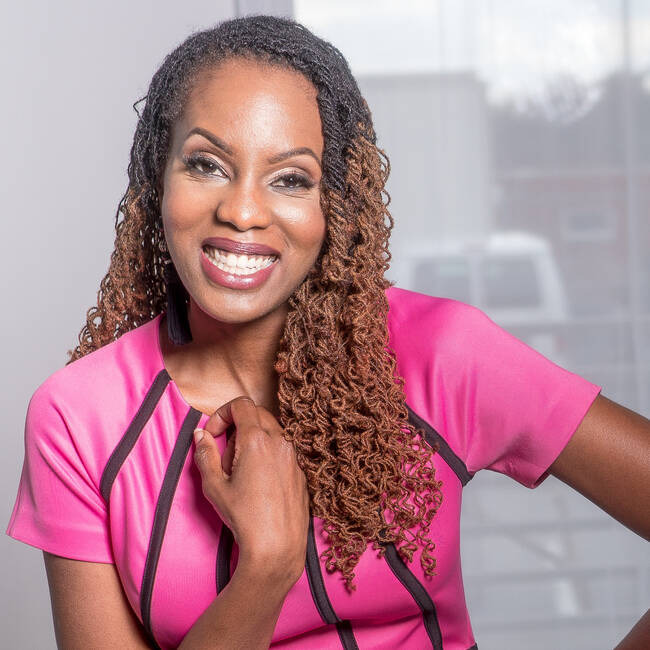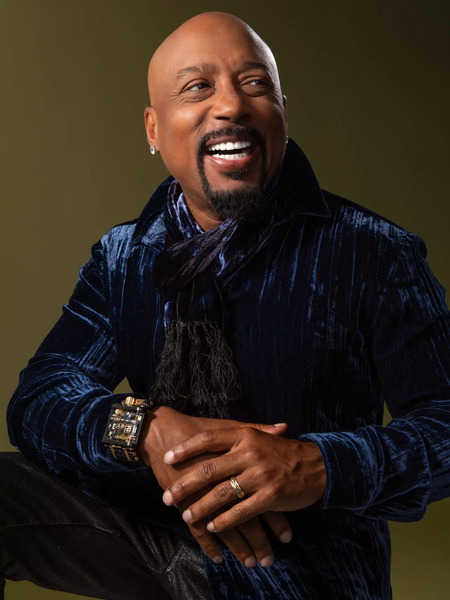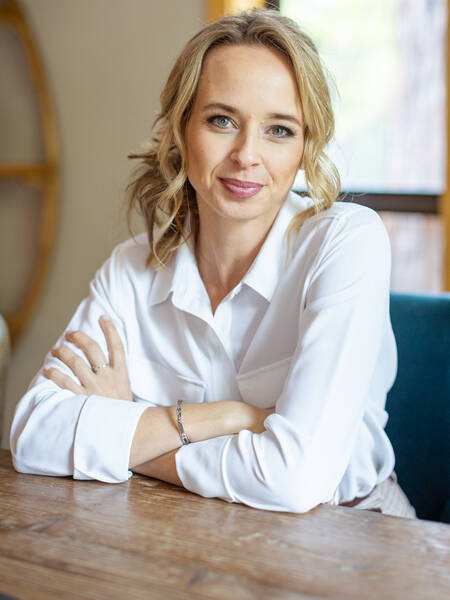Beyond the Numbers: Dr. Jones on Empowering Students Through MathEsteem
Jakia Cheatham - Myles June 24, 2025
PRETTY WOMEN HUSTLE
Dr. Valerie Camille Jones is not your average math teacher—she’s a powerhouse educator, curriculum innovator, and internationally recognized speaker who’s redefining how students experience mathematics. With over 25 years of teaching experience, Dr. Jones is on a mission to turn math fear into math joy, combining academic rigor with culture, creativity, and connection.
An award winning leader in education, Dr. Jones is a 2025 inductee into the National Teacher Hall of Fame and a recipient of the prestigious Presidential Award for Excellence in Mathematics and Science Teaching (PAEMST), the nation’s highest honor for STEM educators. She has been featured on CBS Mornings with Gayle King and honored in the U.S. Congressional Record by the late Congressman John Lewis for her groundbreaking work in equity and excellence.
Currently a lead math educator at the world renowned Ron Clark Academy, Dr. Jones teaches in a globally visited model classroom that has welcomed over 100,000 educators. Her engaging, culturally responsive teaching style weaves together music, dance, storytelling, and real world application to make math not only understandable but unforgettable.
Dr. Jones is the creator of MathEsteem®, a transformative approach that helps students build math confidence by connecting content to identity, creativity, and popular culture. Her viral educational rap, developed in collaboration with Old Navy and Pharrell Williams’ I AM OTHER, has inspired millions and reflects her belief that math can be as expressive and exciting as the arts.
A National Board Certified Teacher with advanced degrees in mathematics education, Dr. Jones presents internationally at top education conferences including NCTM, ISTE, BETT London, OAME (Canada), and the World Science Festival in New York City. Whether leading professional development, consulting on STEM access initiatives, or sharing quick tips in her popular “Math Tip Tuesday” series, Dr. Jones empowers students and educators alike to discover the beauty, creativity, and endless possibility in mathematics.
We had the opportunity of sitting down with Dr. Jones to discuss her groundbreaking approach to math education, the power of culturally responsive teaching, and how she’s helping students overcome math anxiety through creativity, confidence, and connection.
Dr. Jones Ford, your creative teaching methods like using video games and art in math have captured national attention. What sparked your innovative approach to making math more accessible and fun?
My innovative approach to teaching math was born from my experiences as a student who didn’t always find math easy. I realized that the right guidance could turn confusion into clarity, and I wanted to become that guide for others. From my first classroom in Atlanta to today, I’ve made it my mission to create access points for students who feel disconnected from math. By incorporating video games, popular culture, dance, and art, I help students see the beauty and utility of mathematics in the world around them. These methods are not just for engagement. Strategic, research-based, and equity-driven approaches make math culturally relevant and deeply personal.
You’ve coined the term “math esteem.” Can you explain what it means and why building it is essential for student success?
Math esteem is the confidence and belief students have in their ability to succeed in mathematics. Too often, students internalize the myth that they are “not math people,” which becomes a barrier to their achievement. I created the Math Esteem program to challenge that narrative by designing lessons that reflect students’ interests and experiences. By helping them see their culture and creativity in math, we replace fear with empowerment. When students believe they can do math, they engage more deeply, persist through challenges, and achieve at higher levels. Math esteem is the foundation for unlocking every student’s potential in STEM.
Your viral math rap with Old Navy and Pharrell Williams I AM OTHER resonated with millions. What was it like creating that project, and what impact did it have on your students and the public?
Creating the math rap with Old Navy and Pharrell Williams’ I AM OTHER was one of the most joyful projects of my career. It fused education and entertainment in a way that felt authentic and celebratory. The video reached over 1.8 million views and became a cultural moment that validated the brilliance of our students. In the classroom, it sparked excitement and pride. Students saw themselves reflected in learning and celebrated on a global stage. More broadly, it shifted public perceptions about what math learning can look like. It proved that rigor and joy are not mutually exclusive, and that math can be both relevant and cool.
You’ve trained over 100,000 educators around the world. What are the core principles you emphasize when mentoring other teachers in instructional best practices?
When mentoring educators, I emphasize culturally responsive pedagogy, innovation through technology, and differentiation for equity. My core message is: to meet students where they are, then take them further than they ever imagined. I model instructional practices that include VR, music, real-world math applications, and performance-based assessments. I also stress the importance of building relationships and creating learning environments where every student feels seen, valued, and capable. Ultimately, great teaching is about inspiring the transformation of students and ourselves.
As a National Board-Certified Teacher with multiple degrees in math education, what do you believe is the biggest misconception about teaching mathematics today?
The biggest misconception is that math is about memorization and getting the “right” answer. True mathematics is about reasoning, creativity, and problem-solving. Too often, instruction focuses on procedural fluency at the expense of conceptual understanding. I strive to reframe math as a language of logic and innovation that’s accessible to everyone. We must move away from the notion that math is innate and instead show students how it is learned, developed, and applied, especially in ways that are relevant to their lives and communities.
How have your efforts in shaping instructional policy and increasing STEM access helped shift the educational landscape, particularly for underrepresented communities?
Through national policy work, curriculum design, and educator training, I’ve helped center equity in STEM instruction. Whether developing interdisciplinary math lessons with ARRAY or leading VR-integrated classrooms, my focus has always been on dismantling barriers for underrepresented students. These efforts have led to broader access to high-level math, increased representation in national math competitions, and inspired students from marginalized backgrounds to see themselves as future STEM leaders. By creating inclusive pathways, we’re not just closing achievement gaps. We are expanding possibilities.
You bring a lot of joy and energy into a subject that often intimidates students. How do you balance creativity with rigor in your math classroom?
For me, creativity and rigor go hand in hand. A lesson can be fun and still demand high-level thinking. I design experiences where students apply complex math concepts through projects like designing fashion collections (to study permutations), creating VR spaces (to understand 3D geometry), or analyzing social justice data sets. These tasks engage students emotionally and intellectually, leading to deeper understanding. My classroom is a space where joy fuels learning, and where every student is pushed to grow with support and high expectations.
What advice do you have for educators who want to innovate in their teaching but may be limited by traditional structures or resources?
Start with what you have and what you know matters: your students. Innovation doesn’t always require fancy tech. It requires curiosity, courage, and commitment. Use student interests as your gateway. Integrate storytelling, music, or local issues into your lessons. Collaborate with colleagues and tap into free resources online. Most importantly, believe that change is possible, even in small steps. When students see your passion and creativity, they rise to meet the moment. Innovation begins with a mindset, not a budget.









